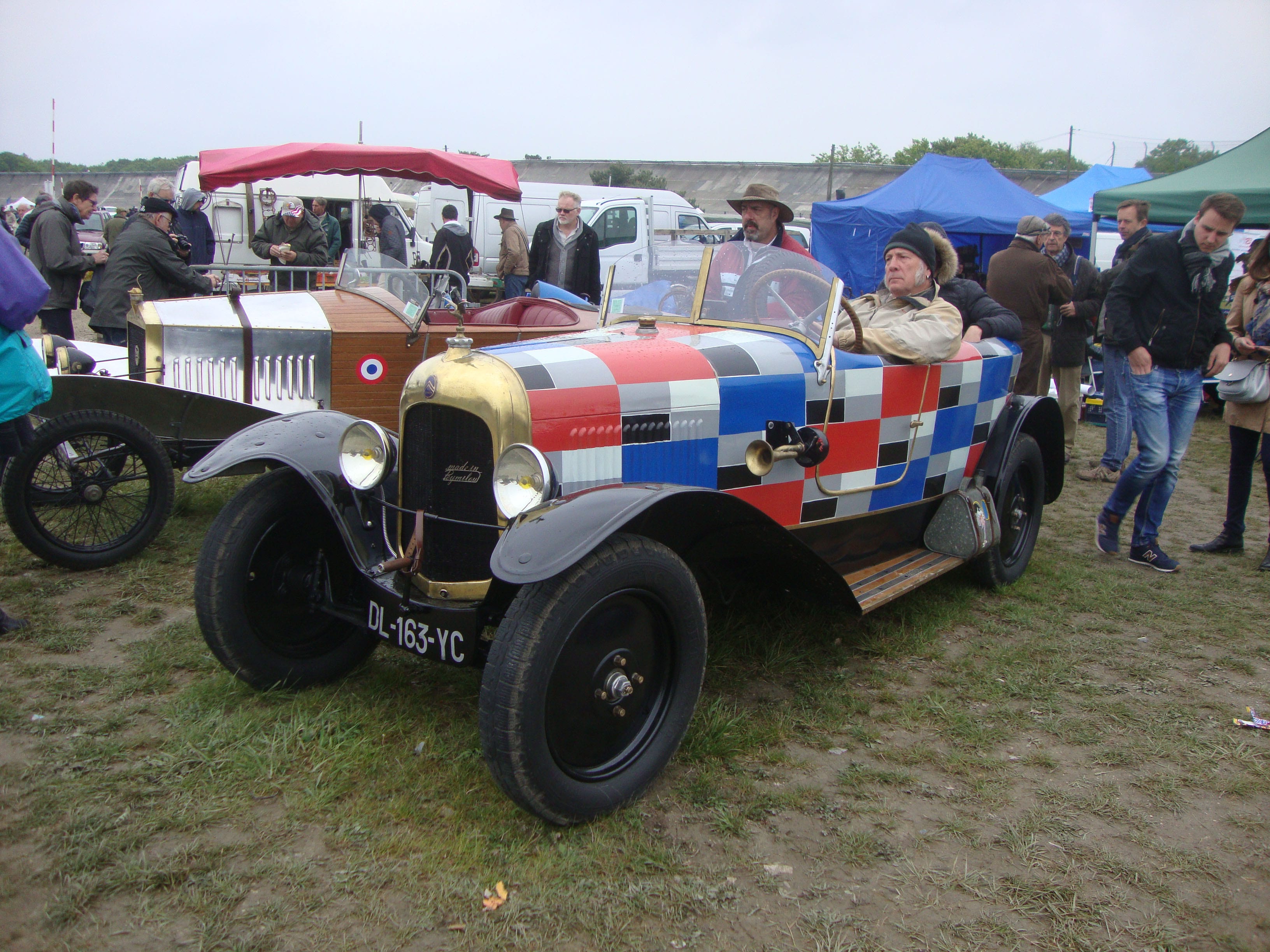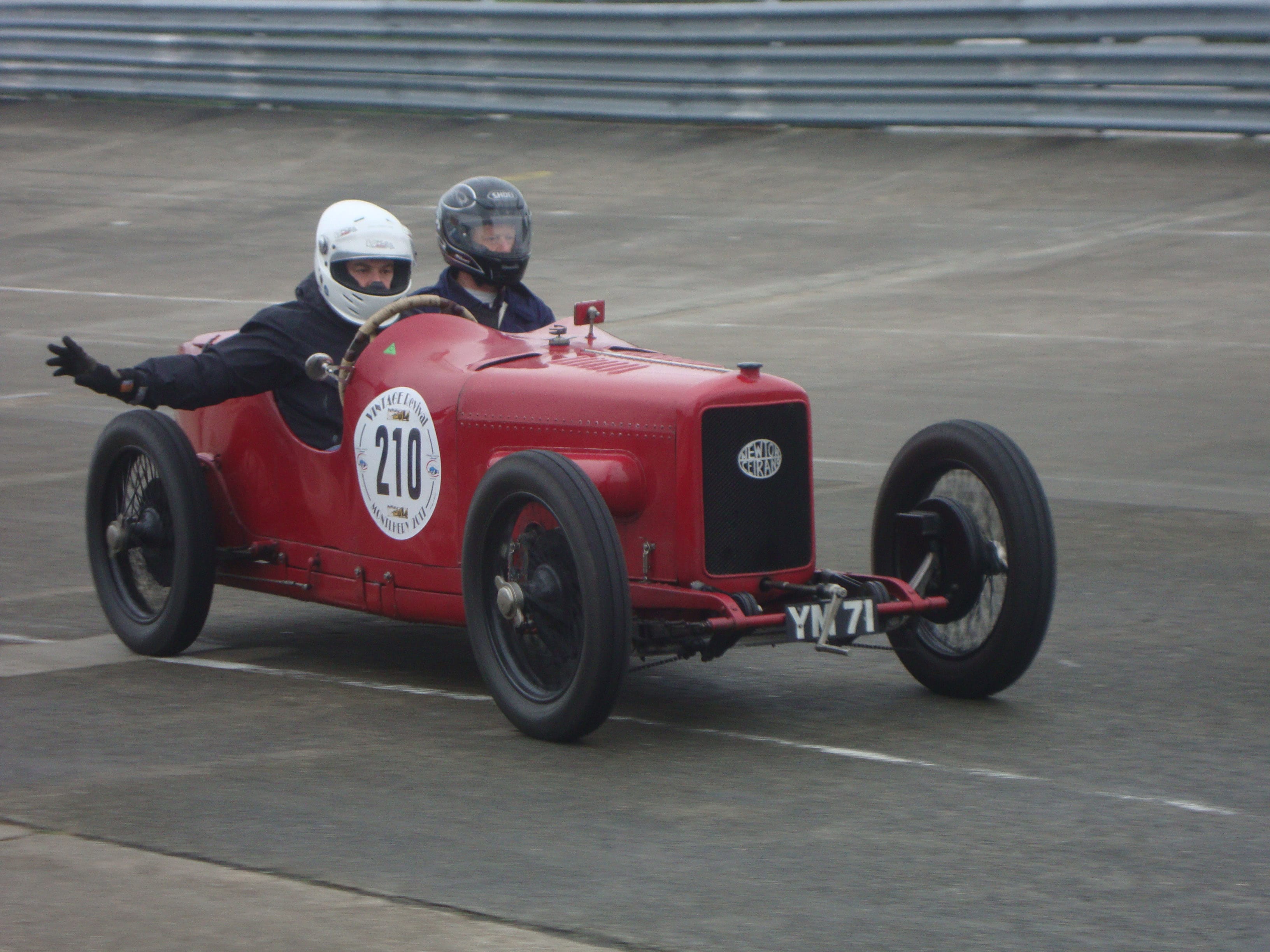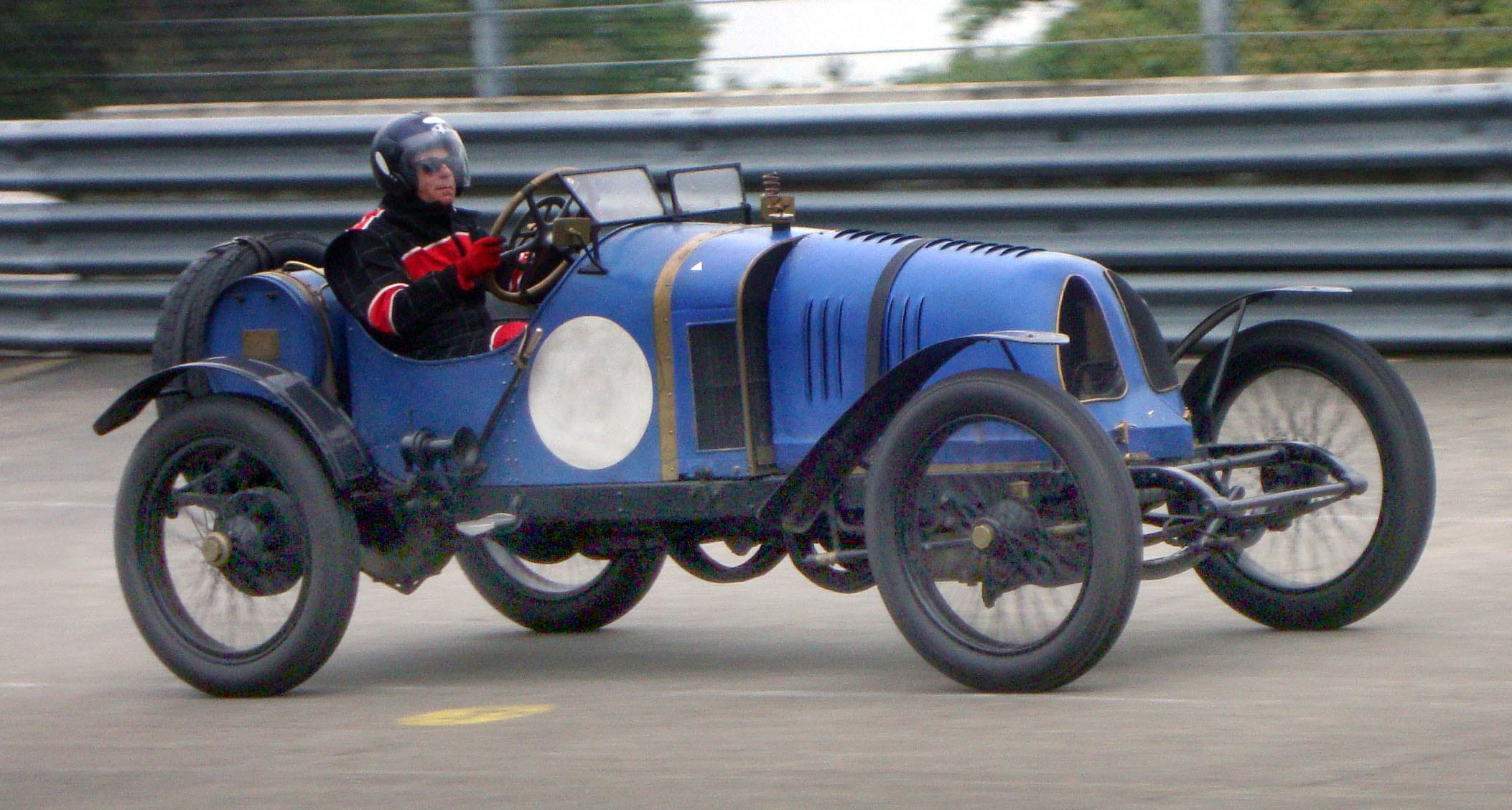Vintage Revival Montlhéry: A Unique Stop On the Collier Delage’s European Tour

Montlhéry, France — Vintage Revival Montlhéry is an old car event like no other. There are no carefully manicured lawns, no hospitality suites, no champagne and oyster bars, no vast semi-trailer support units, no teams of polishers hard at work, no fancy prizes – in fact, no prizes at all.
Yet it’s one of the antique car world’s top events, where the humblest cyclecar ranks equal with the rarest racer and the famous slogan of Brooklands, Montlhéry’s English counterpart, “The Right Crowd and No Crowding” rules supreme. And it has one unique feature – its impressive venue. The Autodrome of Linas-Montlhéry, 16 miles south of Paris, is the last of the great vintage banked tracks to survive in almost its original condition. The 93-year-old concrete speed oval’s vertiginous bankings were planned as a logarithmic spiral (whatever that may be) by its architect, Raymond Jamin.


Held most recently last month, this is an international automotive feast for true car guys and gals. Some 300 pre-1940 cars, motorbikes and a scattering of manumotive machinery engage in fifteen-minute demonstration runs in batches of 35 or so on the shortest of Montlhéry’s augmented circuits, a 2.1-mile affair incorporating a brief road section with two hairpin bends that branches off the banked oval piste.
Some take a relaxed view of proceedings, content to drive low on the banking and drink in the atmosphere. Others, like the lone ERA and the faster Morgan Three-wheelers, fly high on the banking, swooping down into the chicanes that moderate excessive speed.
In its heyday, Montlhéry saw some of the greatest triumphs for the Delage team. Most notable was victory in the ten-hour, 1000km, 1925 French Grand Prix for the 2-litre 2LCV driven by the marque’s star pilote, Robert Benoist and his subsequent win of the 1927 French GP in the 1.5-litre 15 S 8, arguably the most successful grand prix car of all time. That year, the combination of Benoist and Delage won all four World Championship Grands Prix.

This year, to celebrate the 90th anniversary of that historic triumph, the Collier Collection’s Delage 15 S 8, the most original of the surviving examples of that remarkable model that was still winning races 20 years after its debut, returned to Montlhéry. Its appearance was part of a 10-months long European tour for the Collier car.
First stop, in February, was Retromobile in Paris. After Montlhéry the 15 S 8 went to England’s Brooklands Museum, and will proceed from there to the Brooklands Double Twelve Motorsport Festival, the Goodwood Festival of Speed and the Goodwood Revival. The car returns home in October to Revs Institute in Naples, Fl., where the Collier Collection is housed.

What was the origin of Vintage Revival Montlhéry? Back in 1998, my late friend Jacques Potherat, a vintagent par excellence with a penchant for Kimber-era MGs and passion for the golden age of Montlhéry, rang me from his home in Paris: “I have hired Montlhéry for a weekend at which owners can demonstrate their vintage sports and racing cars on the track,’ he told me in his rich Gallic tones. “It will be a meeting for pre-1941 cars only; we shall give Vintage Montlhéry a real pre-war look. Modern cars, trailers and transporters won’t even be allowed in the paddock. And you shall be the English commentator…” It’s a function I’ve gladly carried out at every Vintage Montlhéry meeting since.
Sadly, struck down by an obscure tropical disease, in 2001 Jacques died far too young, only a few days after attending the fourth Vintage Montlhery. Though his friends held a fifth meet in 2002 in his memory, it seemed his dream ended there, particularly since the old track was under threat of demolition. Fortunately, the track’s owners UTAC – the French motor manufacturers’ organisation – had a change of heart, the track was reprieved and its unmatchable heritage celebrated.
The first Vintage Revival Montlhéry was organised in 2011 by a team of volunteers headed by Vincent Chamon to mark the tenth anniversary of Jacques’ passing. Enthusiasm for the event was, if anything, even stronger, and every “VRM” held since – it takes place every two years – has been oversubscribed, with a sizeable group coming from England, many driving all the way.



















This year’s honoured make was the Chain Gang – GN and Frazer Nash – whose cars formed a sizeable proportion of the strong British contingent, with 30 ‘Nashes entered. There were also 22 GN cyclecars and licence-built Salmson-GNs, ranging from the standard item as confected by Ron Godfrey and Archie Frazer Nash to a bewildering variety of specials, some powered by engines way beyond the 1-litre vee-twin of the production model. Most exotic was Richard Scaldwell’s 1914 Grand Prix GN, an impressively patinated bolide powered by a 1908 prototype JAP V8 air-cooled aeroengine of 5.1-litres capacity.
Of the French-entered Salmson-GNs, most distinctive was Michel Azema’s razor-nosed racer, winner of the cyclecar class in the 1921 Boulogne Grand Prix. Sadly, on the Sunday this historic racer suffered a crippling collapse of its rear axle as it rounded the last chicane and had to be carted away.
A fascinating feature of the meet was the entry of re-creations of long-lost racers, like Vincent Marion’s replica of the remarkable 1933 Citroën Petite Rosalie, which set 57 international distance records from 4000 to 300,000 kilometres and 28 world distance records from 140,000 to 300,000 kilometres.
Spectacular was Bugatti guru Ivan Dutton’s 1914 Grand Prix Peugeot re-creation, a thunderous beast that looked and sounded the part. It was just one of a grid that included a number of pre-Great War competition machines, among them Nick Pellett’s 1914 Tourist Trophy Sunbeam and the 1907 Delage Type F of Bernard Holmes, a veteran of the 1907 Coupe des Voiturettes. Brooklands was recalled by the 1911 Wolseley racer of Richard Twelvetrees, Yves Millot had entered a formidable 1906 7.5-litre Mercedes-Simplex and Jacques Iuri drove a Theodore Schneider that had competed in the 1913 Grand Prix.
In all, there were eight grids of cars and two of motorbikes, plus on-track parades of pre-1919 motorcycles and weird and wacky machinery from the early days of motoring. Those included a trio of Bédélia cyclecars, eccentric tandem-seated torpedoes built by a firm co-founded by Henri “Bon Boulot” Devaux, grandfather of Jacques Potherat.

In short, Vintage Revival Montlhéry is a celebration of historic motor sport impossible to match anywhere else in the world, all administered with the lightest – but most effective – of administrative touches.

David Burgess-Wise is an automotive author, enthusiast and historian who has written more than 30 books on motoring history and translated six more from French. He lives in the village of White Roding in Essex, England.
####